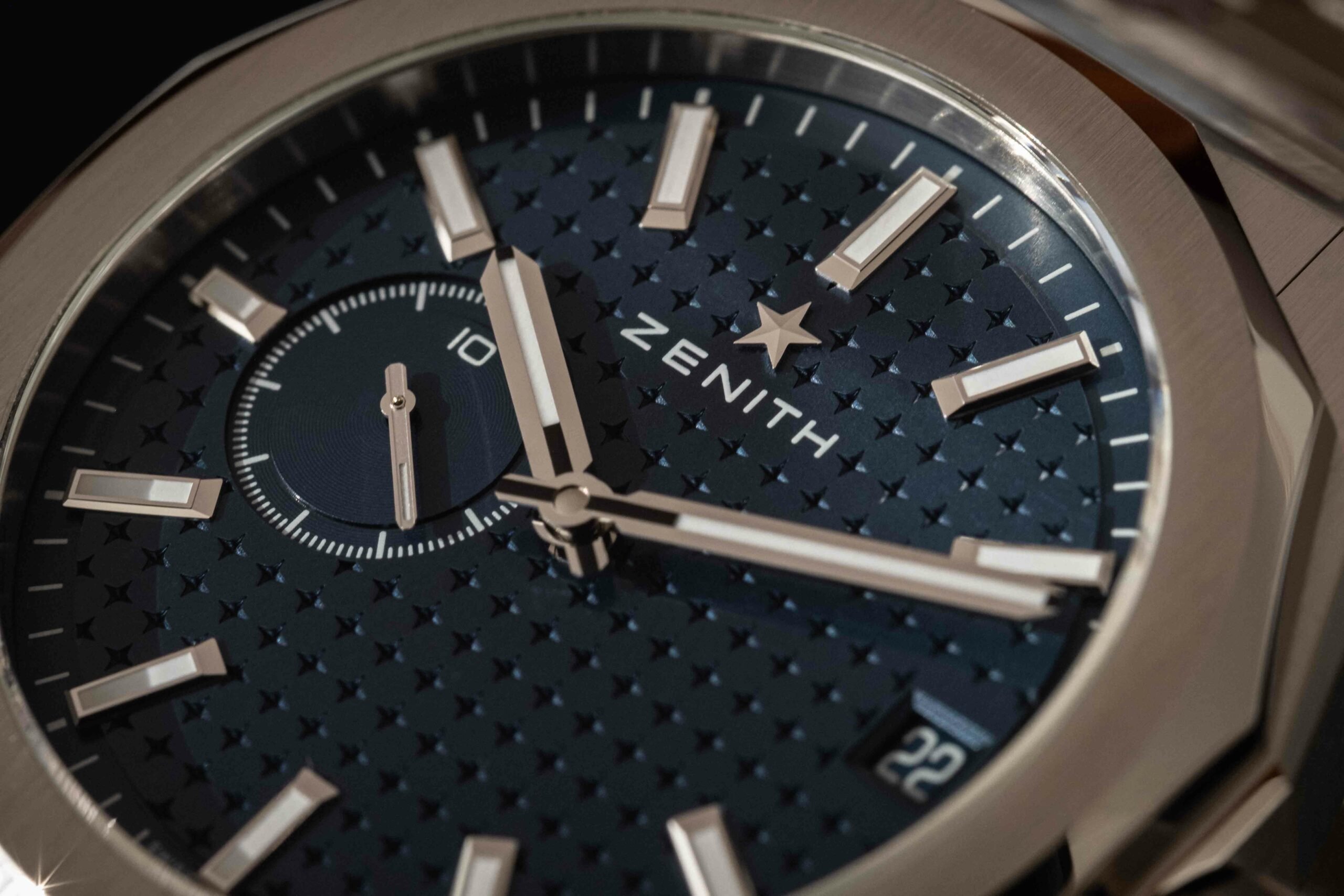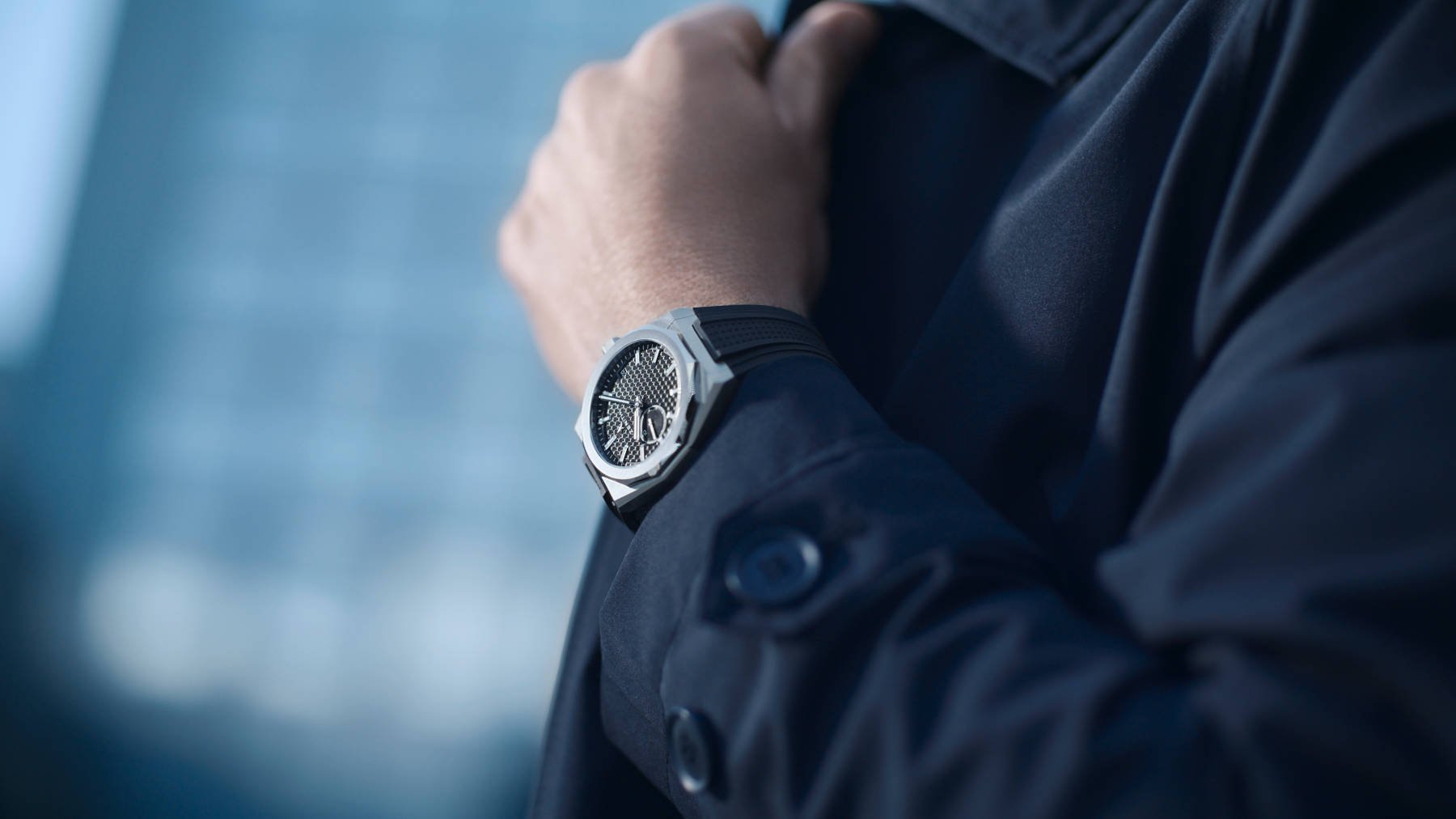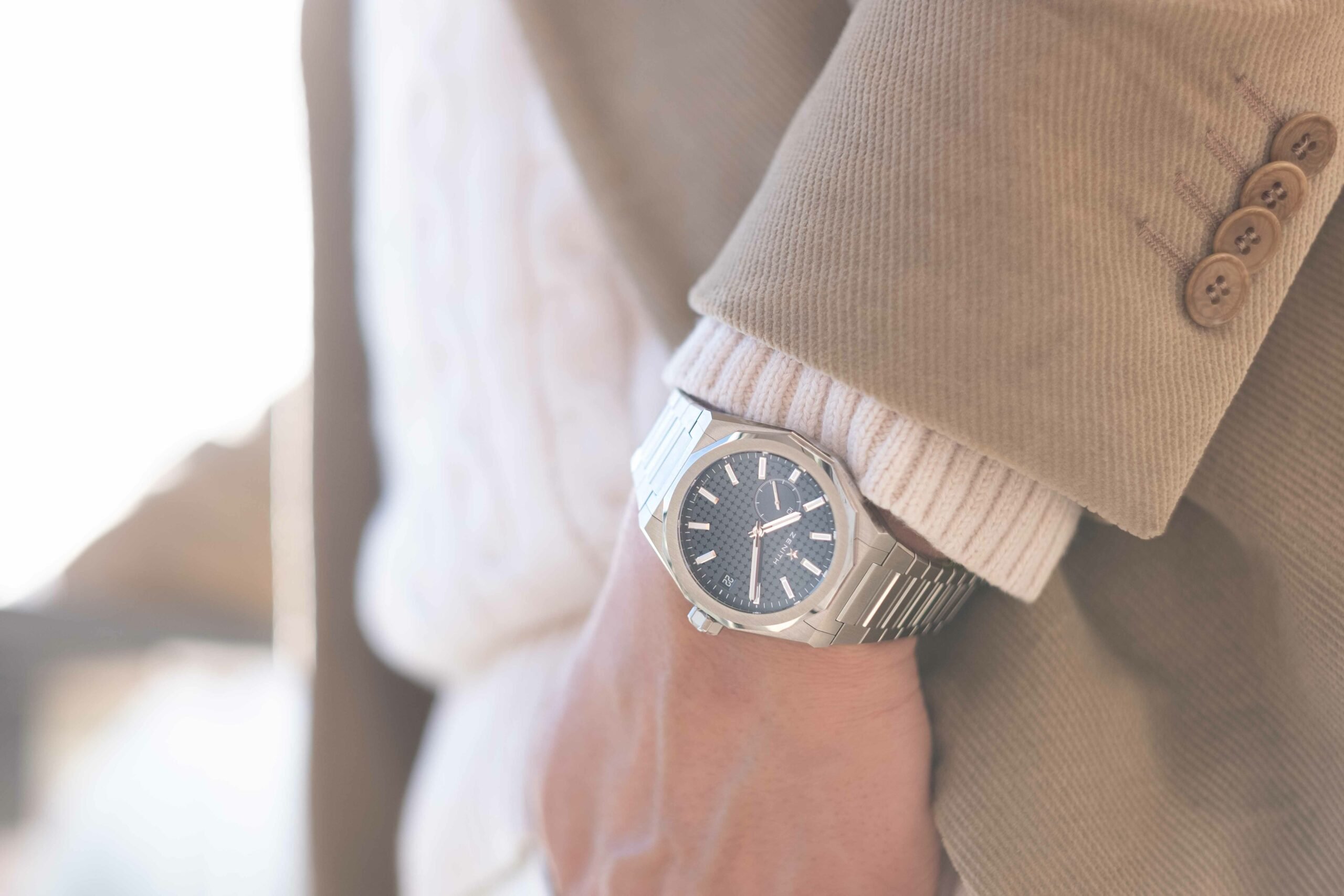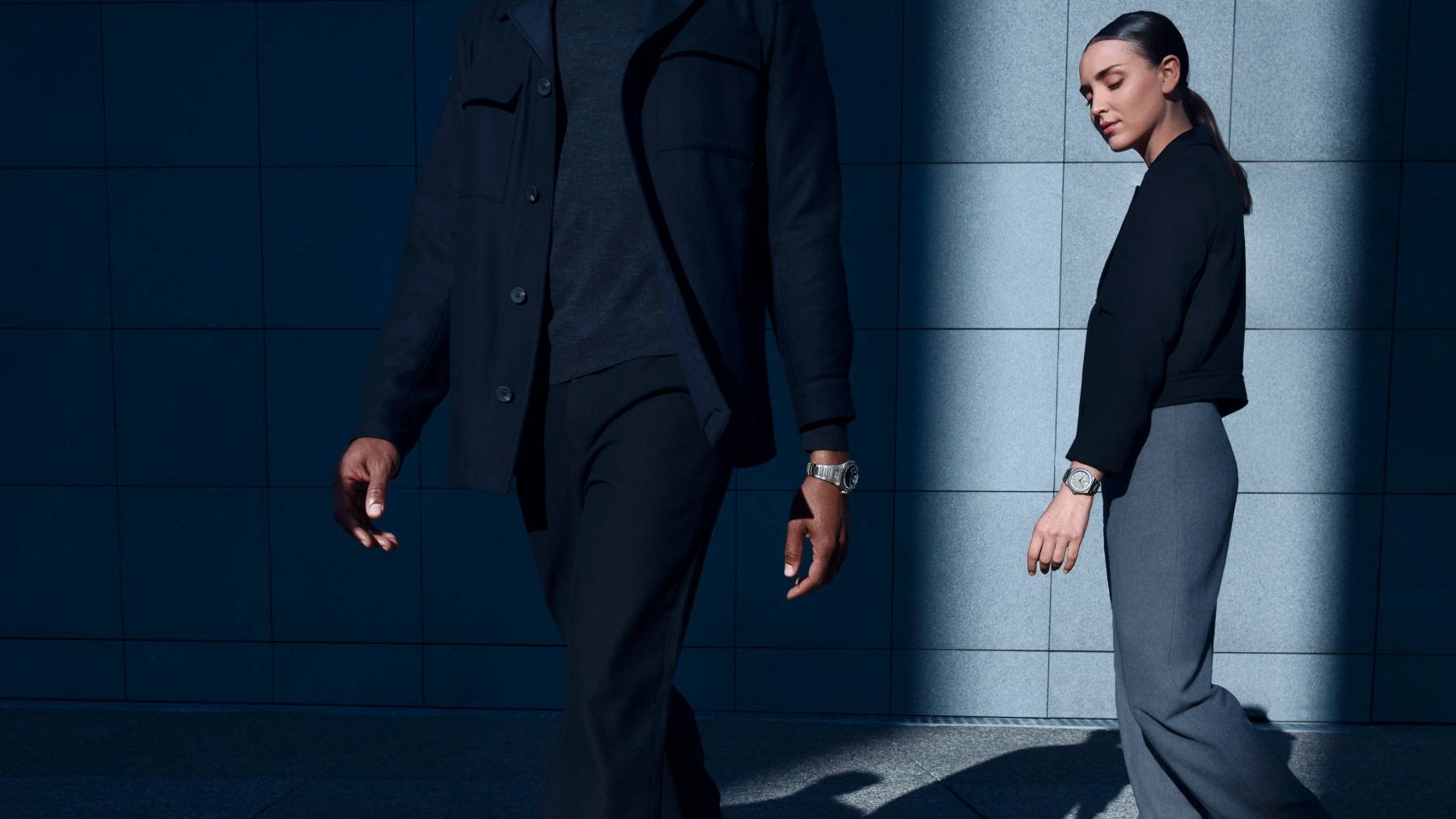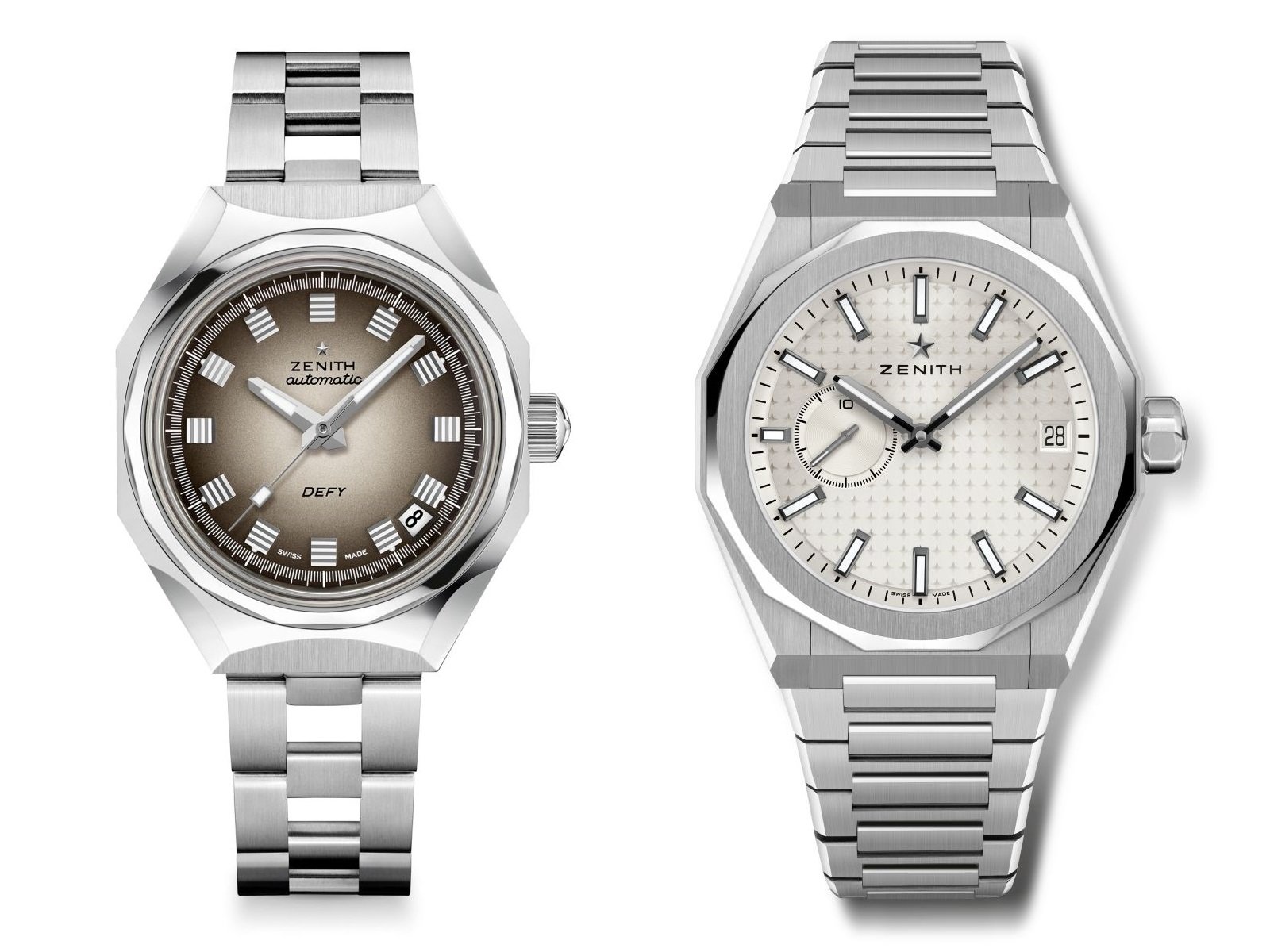The Defy Skyline: Zenith’s Three-Handed Heir To The El Primero Throne
The Zenith El Primero name is one that demands respect in the watch industry. Zenith introduced the venerable chronograph in 1969, and the movement remains the brand’s bread and butter to this day. Of course, there have been numerous updates and revisions, improving the accuracy and reliability as modern technology has allowed. The El Primero is one of the most well-known chronograph movements, but this year, it’s expanded its horizons to a simpler three-hand offering in the form of the Zenith Defy Skyline.
It might take a little getting used to, referring to a non-chronograph watch as an El Primero, but there you go. The Skyline is powered by a variant of the El Primero 3600, the high-beat, tenth-of-a-second-measuring chronograph movement that powers the Chronomaster Sport. However, this is not a case of “dumbing down” the movement. The resulting watch features a central hour and minute hand and running seconds sub-dial at nine o’clock, making a complete rotation every 10 seconds. This sub-dial operates just like the central chronograph seconds hand on the Chronomaster Sport.
1969 — the year it all began
Brandon said in his article back in January that the new Defy Skyline bears more than a glancing similarity to the Defy A3642 that Zenith released back in 1969. What’s that? 1969? That’s right, the same year, the El Primero made its way to market. It’s all starting to make sense now. So, when Zenith introduced the new Defy Revival A3642, also back in January, it was but an appetizer of things to come in the expanding Defy line. Despite the similarities, the Defy Skyline lacks the utilitarian zeitgeist of the original Defy and the Revival reissue. Instead, it has an evolved design language that proudly pays homage to its roots while providing a modern platform for Zenith to explore and build upon.
The Defy Skyline is a master of disguise
At first, the Defy Skyline caught me off guard. It was radically different from the rest of the Defy family, or so I thought. After the initial impact has cooled down, it’s obvious how the Defy Skyline takes cues from other Defy models to insert itself into Zenith’s flagship collection seamlessly.
While referencing the Defy Revival A3642, the Defy Skyline’s style is heavily based on the Classic. That said, there are a few differences that give the Skyline its own unique personality.
Classic Zenith
The Skyline’s dodecagonal bezel is less delicate than the round bezel on the Classic and the most obvious reference to the A3624. It’s also noticeably wider. This has the knock-on effect of reducing the dial aperture, focusing the wearer’s attention on the sunburst dial with its gorgeous four-pointed star motif.
I know the Zenith star has five points, but it wasn’t always this way. Back in the day, the case backs often featured this four-pointed star. The other difference is the 10-second sub-dial at 9 o’clock, the sign that the Defy Skyline is a member of the El Primero Club.
The three colors of the Defy Skyline
Zenith offers the new Defy Skyline in three different color options. The band played it reasonably safe with silver, black, and blue. I reckon a rich, forest green dial could be an absolute stunner. I’m interested to see what Zenith does with the Defy Skyline moving forwards. Would it make sense to explore further complications, or is the Skyline’s charm its three-handed El Primero heart? Could an El Primero GMT be on the cards? Let me know your thoughts in the comments!
You can find out more about the Zenith Defy Skyline on the official Zenith website.
This is a preferred position post. Learn more.
Follow me on Instagram: @davesergeant | @fratellowatches

